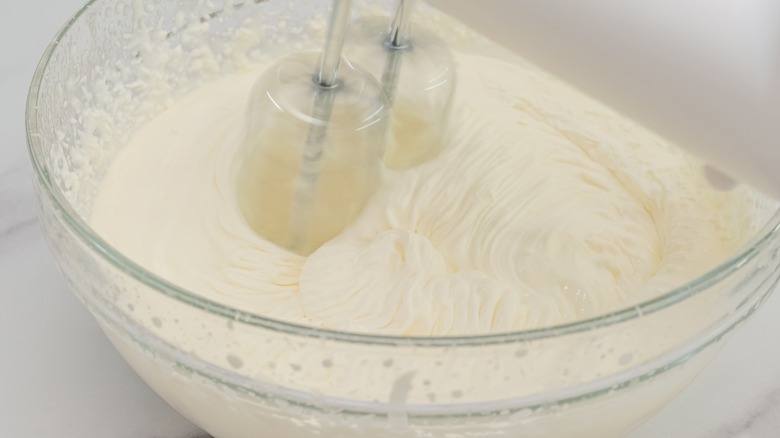Why You Shouldn't Leave Cream Cheese On The Counter To Soften
Tons of baking recipes call for room-temperature cream cheese, and since this cheese must be stored in the fridge (or you may even keep it in the freezer), a quick solution for defrosting it is good to have up your sleeve. Many of us default to leaving the cheese out on the counter for a few hours, but this is far from the ideal method.
While you're not wrong in thinking this will soften your cream cheese, leaving it out can put your health at risk. According to the USDA, refrigerated foods like cream cheese cannot sit out at room temperature for more than two hours, due to the risk of contamination by salmonella, E. coli, staphylococcus, and other harmful bacteria. In other words, eating cream cheese that has been out on the counter for a few hours could likely land you with a case of food poisoning.
The safety window of two hours can also shrink, depending on the actual temperature of the room. While the inside of the average fridge is at or below 40 degrees Fahrenheit, average room temperature is around 70 degrees. In hotter climates, where room temperature could be upwards of 90 degrees, cream cheese can reach the danger zone within an hour. As such, a good rule of thumb is to simply not defrost cream cheese on the counter for any amount of time, and instead use a better method.
Safe ways to defrost cream cheese
The best methods for defrosting cream cheese are not only safer, but faster than leaving the package out on the counter. One easy path to take is submerging the cream cheese in warm water. If still unopened, you can keep it in its packaging and plop it right into the water, but if you're using already-opened cheese, you'll want to tightly seal it in a plastic bag or another waterproof wrapping. Within 15 minutes, your cream cheese should be softened enough for use.
If you don't have 15 minutes to spare, you can also defrost cream cheese in the microwave. You should first remove the cream cheese from its foil, paper, or plastic packaging and place it in a microwave-safe container. Heat in short bursts, between 10 and 15 seconds, checking after each interval that the cream cheese is softened but not melted. Warm and soupy cream cheese can throw off your recipes as much as cold, solid cheese would.
However you choose to defrost your cream cheese, the danger zone remains the same. At no point in time should your cream cheese be out of the fridge for more than two hours, so if you choose the warm water method, set a timer so you don't forget about it.
How to fix frozen cream cheese
If you've been storing your cream cheese in the freezer, and you take it out to defrost, you might notice a change in texture. Cream cheese has a high water content, which crystalizes and expands in the freezer. As a result, cream cheese tends to take on a gritty texture after it's been frozen, rather than being smooth and creamy. To make matters worse, the fats in the cream cheese may also separate from the liquids, leaving you with a rather unappetizing mishmash of textures.
You can fix gritty or separated cream cheese fairly easily. Using a spoon, whisk, or handheld mixer, you can thoroughly mix the cheese to bring its fat and water back together, while eliminating grittiness. Defrosting the cheese in the microwave can also help redistribute and re-combine the fats and liquids. Even if the texture still isn't ideal, though, you can still use the cream cheese in recipes where it isn't front and center. For instance, try hiding it in cream cheese brownies.



